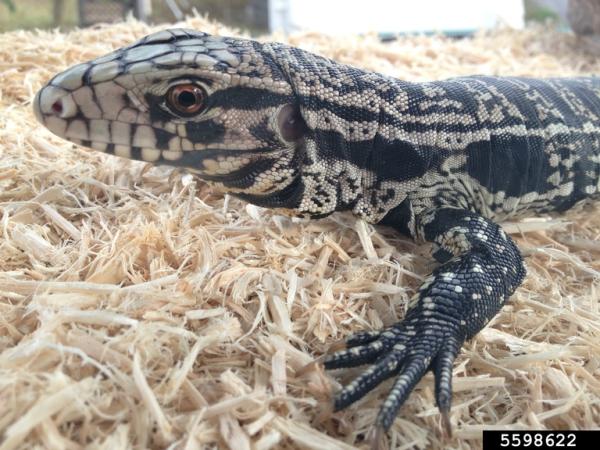Salvator merianae (Duméril & Bibron, 1839) (formerly known as Tupinambis merianae) (Harvey et al. 2012)
Argentine black and white tegu, Argentine giant tegu
South America (Wood et al. 2018)
First established population documented in Florida in 2006 (Wood et al. 2018)
Pet trade (Wood et al. 2018)
Generalist omnivore that preys on many native species (Engeman et al. 2019)

Argentine black and white tegu, adult
Photo by Alicia Wellman; Florida Fish and Wildlife Conservation Commission
Spotlights
Distribution / Maps / Survey Status
Videos
Selected Resources
The section below contains highly relevant resources for this species, organized by source.
Federal Government
State and Local Government
Engeman, R.M., B.W. Kaiser, and K.J. Osorio. 2019. Evaluating methods to detect and monitor populations of a large invasive lizard: the Argentine giant tegu. Environmental Science and Pollution Research 26:31717–31729.
Harvey, M.B., G.N. Ugueto, and R.L. Gutberlet, Jr. 2012. Review of Teiid morphology with a revised taxonomy and phylogeny of the Teiidae (Lepidosauria: Squamata). Zootaxa 3459:1–156.
Wood, J.P., S.D. Beer, T.S. Campbell, and R.B. Page. 2018. Insights into the introduction history and population genetic dynamics of the Argentine black-and-white tegu (Salvator merianae) in Florida. Genetica 146:443–459.
